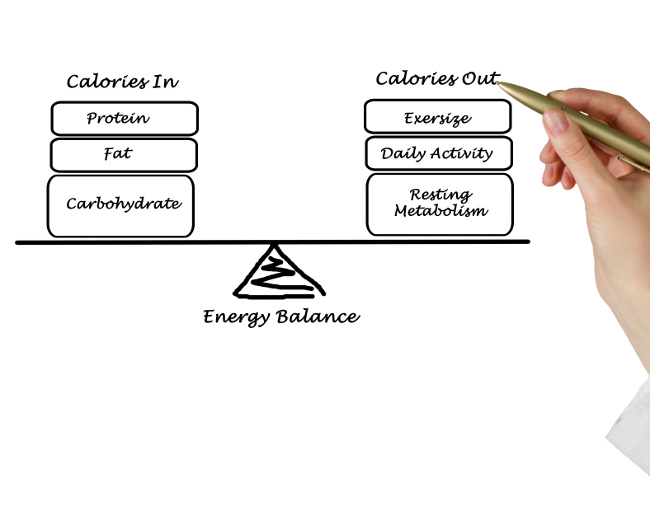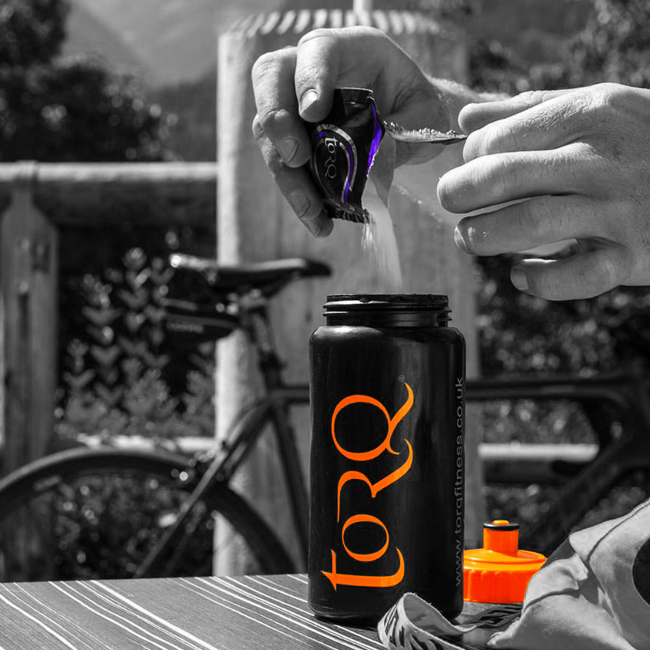The Performance Weight LossTM program is an initiative exclusive to TORQ and one that focusses on driving physical fitness forwards to provide an increasingly positive spiral of events, having an unrivalled impact on body fat loss.

Let’s make it clear at this juncture that if we refer to ‘weight loss’ at any point during this article, we are talking about ‘fat loss’. There is no other type of meaningful weight loss. Water loss is very easy to achieve and offers nothing other than temporary misguided euphoria when standing on the scales and muscle loss/loss of lean mass, as we discuss later on, is highly undesirable. Also, we do not accept the notion that certain food groups should be demonised/avoided and strongly advocate a healthy balanced diet. If you haven’t read our Optimal Training, Nutrition for Health and Performance Nutrition articles in this series, you should take the time to do so. We will be applying exactly the same principles and concepts to your Performance Weight LossTM schedule.

At the heart of Performance Weight LossTM is the tried, tested and indisputable Energy Balance Equation. This forms the basis of every successful weight loss program in the world and it simply hypothesises the following:
Energy IN = Energy OUT // Bodyweight Stable // Energy Balance
Energy IN > Energy OUT // Bodyweight Increases // Positive Energy Balance
Energy IN < Energy OUT // Bodyweight Decreases // Negative Energy Balance
It’s not rocket science is it? It never has been, yet so many commercial fad diets and false promises have left swathes of people feeling very disillusioned and confused. Be disillusioned and confused no more, because we’re here to make this process very simple for you to understand. We’re not just going to tell you to do something, we’re going to explain to you how you’re going to do it and why it will work.
For the avoidance of doubt, if you’re wanting to lose body fat you will need to create a Negative Energy Balance and logic dictates that there are 2 ways you can achieve this – you either eat less or exercise more. It’s also reasonable logic to assume that if you cut back on the calories you’re consuming as well as exercising more, you will lose weight faster, however, as we are about to explain, alas this isn’t necessarily the case.

As well as the sound logic surrounding the Energy Balance Equation, what’s also at the heart of Performance Weight LossTM is an overriding focus on driving fitness and physical performance forwards. There is once again clear logic to this approach. Firstly, training sessions aimed at driving fitness forwards will burn more calories, so simply put, if you have 45 minutes available to exercise, make sure that you use that time wisely and create as large an energy deficit as possible. Secondly, training sessions aimed at driving fitness forward – guess what – yes they ‘drive fitness forward’. If you drive your fitness forward, you will burn even more calories in your next exercise session. You will also have generated physiological adaptation, a fate of which is an increase in muscle strength and density. Muscle is a living tissue which requires energy to exist. The more muscle you have, the more energy/calories your body needs at rest just to live! There is a direct indisputable link between the amount of lean muscle mass one possesses and one’s basal metabolic rate, otherwise referred to as BMR.
1G FAT = 9 Calories
In summary then, driving fitness forwards provides a larger energy deficit for a given amount of time during exercise, increases the amount of calories you’re able to burn in your next exercise session and also increases BMR. These are three really key components to losing body fat. Now let’s consider your diet, or what you’re putting into your body. We know that the calorie energy you consume needs to be less than the calorie energy you’re pushing out through your BMR and exercise – again this is sound logic isn’t it? Therefore, let’s advise you to consume approximately 500 calories less per day than you are burning. This works out as about 1Kg (2.2lbs) of fat loss in 2 weeks. If you consider that 1 gram of fat contains 9 calories, 1Kg of fat therefore contains 9,000 calories. At a 500 calorie daily deficit or Negative Energy Balance, it will take you 18 days to lose 1Kg of fat. This is a sensible rate of fat loss (around 0.4Kg or 1lb per week). A more aggressive approach than this will potentially create a negative spiral of two factors. Firstly, you won’t have the energy available to exercise effectively and drive your fitness forwards and secondly, it will lead to a lack of muscular adaptation and your BMR won’t rise. Logic once again dictates that a very aggressive calorie-cut will lead to highly ineffective fitness training and a loss of muscle mass, causing a severe reduction in BMR. It doesn’t sound very constructive does it?
In fact, even on a 500 calorie daily deficit, if you don’t choose your calories carefully and intelligently, you could find yourself in the same position, with insufficient energy to train and a falling BMR. Work on a 500 calorie per day deficit, but choose the right calories and choose the correct timing of those calories. You will remember in our Nutritional For Health article that we outlined what you should do to stay healthy and none of this changes. Plenty of fresh fruit and vegetables – these are generally calorie-sparse, so you can have as much as you want. Keep your fat intake low, but make sure that the fats you do consume are rich in Omega 3 and these sources will also be plentiful in the fat soluble vitamins A,D,E and K. Fat is the enemy at 9 calories per gram and is incredibly energy rich. Yes, we burn fat whilst we’re exercising and at rest, but we have plenty of it. In fact if you’re reading this article with interest, you obviously have too much of it! Dietary fat is not a limiting factor to your performance, but two other nutrients are and they are of course protein and carbohydrate. Again, we discussed the role of these nutrients in our Performance Nutrition article and with your Performance Weight LossTM program, nothing changes. Consume 5 X 25g protein hits per day, evenly spread (3-4 or so hours apart). At 4 calories per gram, these 5 protein hits will amount to a relatively small 525 daily calories and they will be highly functional, helping you to adapt and grow your BMR.

The majority of the remainder of your daily calories should come from carbohydrate sources to fuel your exercise performance of course. Without carbohydrate in your muscles, how can you expect to have the fuel available to drive your fitness forwards? Consume a variety of carbohydrate sources and include as much unprocessed complex carbohydrate like brown/wild rice, brown pasta and wholemeal bread as a few examples. The less processed they are, generally the lower the glycaemic index and the more healthy micronutrients will be contained within them. Does consuming carbohydrate like this fly in the face of the general advice you’re getting through the media? Of course it does, because the government and media are obsessed with the one-track manipulation of people’s diets to improve their health and weight loss outcomes – exercise very rarely gets a passing mention. If you’re sedentary and overweight, carbohydrate is quite literally poison, but you’re not sedentary and the very fact that you’re reading this and considering acting on it will mean that if you are carrying a bit too much timber, you won’t be for much longer. Once you’re slim and fit, the risk factors surrounding carbohydrate consumption or more commonly referred to in the media as ‘sugar’ disappears. If you would like to understand more about the risk factors surrounding being overweight and sedentary behaviour, please refer to the tabs at the bottom of our Diabetes Products page – there’s some very interesting information in these tabs providing insight into the positive adaptations to exercise and their effect on blood glucose control – in short, preventing and reversing Type 2 Diabetes. If you have any further questions on this subject or would like to book in for Fitness Consultancy, please don’t hesitate in contacting us on 0344 332 0852 or enquiries@torqfitness.co.uk

The final component of Performance Weight LossTM to cover is the timing of your nutrition. Once again, logic would suggest that consuming energy products during exercise and following with a recovery drink immediately afterwards makes no sense at all if you’re trying to lose weight, because you’d simply be putting unnecessary calories into your body, negating all of the benefits you’re aiming to achieve by exercising. If the calories consumed during exercise and immediately afterwards prevented you from creating your essential 500 calorie deficit, you’d be right. However, if those calories were included in your daily calorie allowance you wouldn’t would you? You would still lose weight, because the calorie deficit still exists. We’ve already mentioned, in the other articles that you’ve been directed to already in this section, that at lower training loads, the nutrients in your general diet will be sufficient to give you the recovery and adaptation you will need to drive your fitness forwards, but what about if you want to lose weight and also sustain a higher training load? Quite simply, calories consumed during and immediately post exercise are the most well timed and effective calories you could possibly put into your body. They will look after your fuel stores, enable you to exercise for longer and drive the adaptation process. Yes, they will assist you in ‘driving your fitness forwards’. You MUST separate the misguided logic that says ‘why would I want to consume calories during exercise when I’m trying to burn them off’. This approach is flawed and you need to look after your performance and use this to drive a positive weight loss spiral.

How many overweight elite cyclists do you know, and how many calories do you think they consume to maintain their slim high performance bodies? If you’re in any doubt at all, we can assure you that calorie consumption is significantly high in performance athletes. They have built themselves into ‘calorie burning machines’.
In summary, if you want to lose weight, work at a negative energy balance of around 500 calories per day, consume a healthy balanced diet rich in fresh fruit and vegetables. Keep dietary intake of fat low, but ensure that you consume foods rich in Omega 3 and the fat soluble vitamins A,D, E and K. Consume 20-25grams of protein 5 times per day and make up the remainder of your daily calorie allowance through high quality carbohydrate sources. If your training volume is high, you need to fuel your performances and use recovery drinks if necessary to facilitate all of the positive adaptations you need to drive your fitness forwards and ensure a high BMR. As long as you stick to the 500 calorie deficit per day, you WILL lose body fat.
If you enjoyed this article, learn more by reading these other articles in this series:
For further information on our Performance Weight LossTM program and general Health Education, take a look at our Fitness Consultancy pages by clicking here or phone us on 0344 332 0852 or email enquiries@torqfitness.co.uk
For further information on TORQ’s Performance Products, click here.




